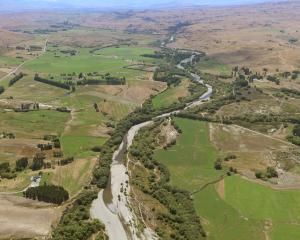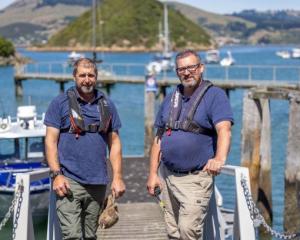People should continue to take care when walking their dogs near Otago waterways as potentially toxic algae could be present on banks as well as in the water after recent high rainfall, the Otago Regional Council says.
Last month, a potentially toxic cyanobacteria algae formed at the outlet of the lower Tomahawk Lagoon in Dunedin and Phormidium, a toxic algae potentially fatal to dogs, was found in the Manuherikia River at Ophir bridge and upstream at Booths Rd, prompting the Otago Regional Council to put up warning signs in both areas.
Otago Regional Council water resource scientist Dr Dean Olsen said this week the council was continuing to monitor both areas.
Signs remained up at Tomahawk Lagoon as there were concerns the northeasterly weather pattern which drove the cyanobacteria to the bottom lagoon and down the outlet to the beach last month could return.
The algae could produce toxins which might cause skin reactions in people and dogs.
However, the top lagoon, which most people used, was fine and had not had a recurrence of the algal bloom that affected it late last year, he said.
On the Manuherikia River, the algae formed mats attaching to its bed, but could peel off and wash downstream, which was when dogs were most at risk.
''So, we've kept the warning signs up.''
The council would reassess the signage if a decent flush went through the river, although if mats were washed on to the bank they could still be toxic, Dr Olsen said.
''Anywhere in Otago, people need to be mindful of algae, especially if rivers have been low for some period.''
The council could not monitor every river in Otago for when a bloom occurred, so dog owners had to keep an eye out for algal growths.
''They need to be cautious.''
Lake Waihola had recovered from its algal bloom last year and continued to return low results for the bacteria.












